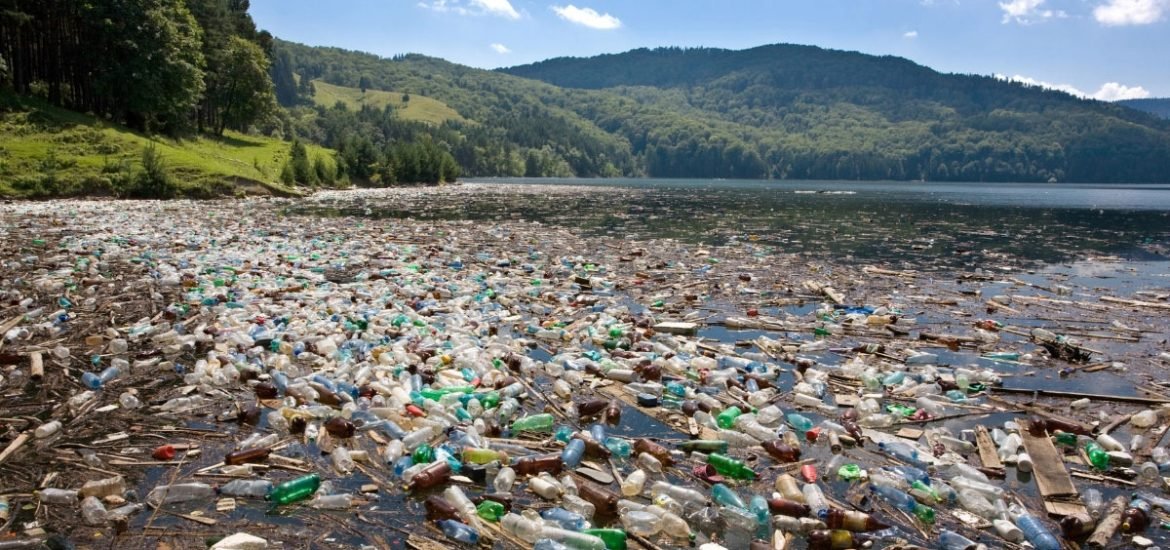
Scientists recently discovered a type of plastic-eating bacteria that slowly munches away on plastic waste in the ocean (1). Now, scientists from the Technical University of Crete have shed some light on how efficient these microbes are at breaking down plastics. The new study is slated for publication in the August 2019 of the Journal of Hazardous Materials (2).
As a result of the human addiction to plastic products, plastic waste has become widespread and can be found in the deepest depths of the ocean and on remote mountaintops. Just last week, a diver discovered a plastic bag at the bottom of the ocean’s Mariana Trench, which is 10,927 meters below sea level and regarded as the deepest place on Earth. Moreover, the great Pacific garbage patch is perhaps the foremost example of man-made environmental destruction.
Growing awareness of the massive scale of the plastic pollution problem — over 300 million tonnes of plastic are produced annually — has led the search for novel ways to clean up both ocean and land environments – from “bioplastics” to ocean trash collectors, and now, perhaps even plastic-eating bacteria.
Most synthetic plastics are not biodegradable and remain in the environment for many many years. however, according to the authors, “a wide range of organisms can settle on the weathered surface” of plastic debris, which they use “as a substrate and as a carbon source”. And these strains of bacteria could potentially speed up the plastic degradation process.
To study the efficiency of the bacterial biodegradation process, the researchers collected samples of naturally weathered polyethylene and polystyrene debris from two beaches in Greece and exposed them to different types of bacteria. Polyethelene is widely used to make plastic carrier bags while polystyrene is commonly found in food packaging and electronics
After five months, the researchers weighed each sample and discovered the weight reduced by between 7–11 per cent. But whereas bioengineered strains were more ”efficient in adhering to the weathered pieces and developing a biofilm community”, they didn’t speed up the degradation process as much as bacterial communities indigenous to the marine environment.
Essentially, the bacteria secrete enzymes that speed up the chemical reactions required to break down the tough polymer chains that plastics are made of – the long repeating chains are what make plastics so durable. Therefore, bacteria affect plastics at a molecular level leading to changes in the surface chemistry.
The best candidates were by far microbes that had been previously exposed to plastic. This is perhaps unsurprising since previous reports also suggested bacteria may be evolving to eat plastics by secreting new enzymes (3).
The authors write, “tailored marine consortia have the ability to thrive in the presence of mixtures of plastics and participate in their degradation”. In other words, bioengineered strains of bacteria can survive on plastic debris and could potentially be used to speed up the biodegradation process.
Although bacterial biodegradation strategies may not be a complete solution, small efforts can contribute to solving the much larger plastic problem. Furthermore, plastic-munching bacteria could become a viable environmentally-friendly recycling strategy in the future or at least part of a larger effort to repair some of the destruction that man-made waste has caused.
(1) Yoshida, S. et al. A bacterium that degrades and assimilates poly(ethylene terephthalate). Science (2016). DOI: 10.1126/science.aad6359
(2) Syranidou, E. et al. Biodegradation of mixture of plastic films by tailored marine consortia. Journal of Hazardous Materials (2019). DOI: 10.1016/j.jhazmat.2019.04.078
(3) Solé, R. et al. The paradox of constant oceanic plastic debris: evidence for evolved microbial biodegradation? bioRxiv (2017). DOI: 10.1101/135582